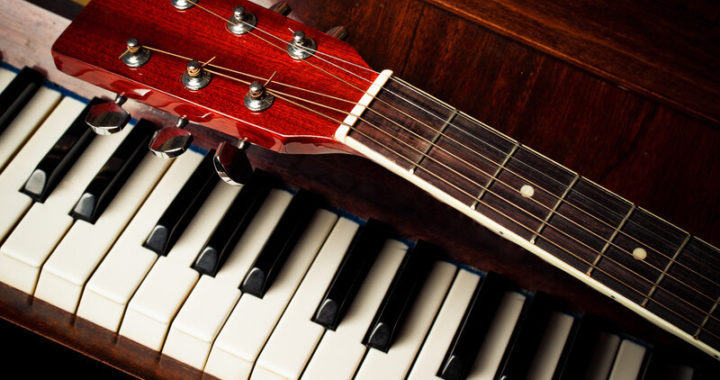In music, the tonic chord is the chord that represents the key of the song:
C Dm Am G C
In that progression, the key is C major, and C is the tonic chord.
The psychology of music makes the tonic chord sound like “home” to us. Our brains relax when, after a long sequence of chords, we hear the tonic chord happen. Play that progression and you’ll hear what I mean. We hear a kind of musical “tension” building up as the progression moves from Am to G, and that tension is released when we hear C return.
 If you like starting songs by working out chord progressions, you need this eBook: “Writing a Song From a Chord Progression.” It shows you how to avoid the typical problems that can arise from this common songwriting process. Get it separately, or as part of “The Essential Secrets of Songwriting 10-eBook Bundle.”
If you like starting songs by working out chord progressions, you need this eBook: “Writing a Song From a Chord Progression.” It shows you how to avoid the typical problems that can arise from this common songwriting process. Get it separately, or as part of “The Essential Secrets of Songwriting 10-eBook Bundle.”
It’s common for progressions to start on the tonic chord, like that sample one above. But sometimes, particularly in verse progressions, it can be musically advantageous to start a progression on a chord other than the tonic.
The problem with starting on a non-tonic chord is that you can feel a bit like the progression is trying to find a direction, and not being very successful at it. That usually happens when you improvise on chord progressions.
So here’s a much better way to create progressions that don’t start on the tonic chord: Write one that does start on the tonic, and when you’ve got one that you like, simply remove the starting tonic.
It’s often the case that you can’t easily remove a chord from a progression and have it work well. In the spot where the chord has been removed, it often (though not always) sounds like something’s missing.
But removing the first chord from a progression, particularly if it’s the tonic, usually works just fine. For example:
C Am Bb F C
That’s a progression in C major that uses one non-diatonic chord (i.e., one chord — Bb — that doesn’t naturally exist in C major). As it is, it’s a fine progression; there’s no reason at all that you can’t use it in that form, starting on the tonic chord.
But there’s a nice momentary “where are we?” sound that comes from not starting on the C, but choosing to start on the Am instead. Listen to the following sound file, and you’ll hear what I mean:
As you hear, I’ve opted to keep the final C, after which the progression keeps repeating with the tonic chord. But there’s something nice about starting on that Am. It gives the progression a touch of edginess that can be useful in a verse, depending on the song’s subject matter.
There is also a strengthened sense of forward motion that comes from a non-tonic start, as you can hear in Lennon & McCartney’s “All My Loving“, or for a more recent example, “Call Me Maybe” (Carly Rae Jepsen, Josh Ramsay, Tavish Crowe) which starts on a IV-chord.
 Written by Gary Ewer. Follow Gary on Twitter.
Written by Gary Ewer. Follow Gary on Twitter.

Each eBook in “The Essential Secrets of Songwriting” 10-eBook Bundles shows you the fundamental principles that make great songs great. Comes with a Study Guide and a FREE copy of “Use Your Words! Developing a Lyrics-First Songwriting Process”











Pingback: The Daily Muse – May 21st, 2020 | All About Songwriting
Pingback: Building a Sense of Anticipation in Your Melodies | The Essential Secrets of Songwriting